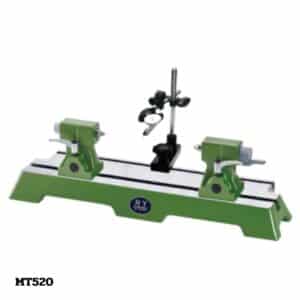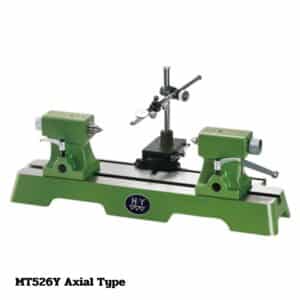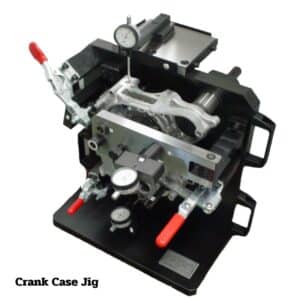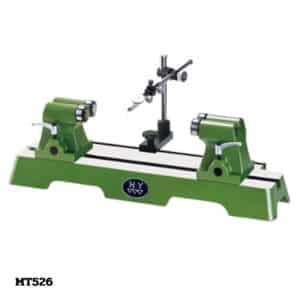Bench Center: Precision Tools for Accurate Workpiece Inspection and Alignment
Bench centers are essential precision instruments used in machining and manufacturing industries for the inspection, measurement, and alignment of workpieces. These versatile tools provide a stable and reliable platform for various tasks, ensuring that workpieces meet specific dimensional requirements and tolerances. In this comprehensive guide, we will delve into the world of bench centers, their types, working principles, applications, and the critical role they play in ensuring precision and efficiency in various industrial settings.
Understanding Bench Centers
Bench centers, often referred to as benchtop centers or simply centers, are devices used to support and position workpieces during machining, inspection, and measurement processes. They are typically mounted on a workbench or a sturdy base and consist of several key components, including a fixed headstock, a tailstock, and a center point or spindle in between. These components are essential for securely holding, aligning, and measuring workpieces with high precision.
Bench centers come in various sizes and configurations, catering to the specific needs and dimensions of the workpieces to be processed. They are an integral part of quality control and are widely used in metalworking, woodworking, and other manufacturing industries.
Types of Bench Center
Bench centers can be categorized based on their design and purpose:
- Standard Bench Centers: These are the most common type and are suitable for a wide range of workpiece sizes and shapes. Standard bench centers feature a fixed headstock, a movable tailstock, and a center point that can be adjusted to accommodate different workpiece lengths.
- High-precision Bench Centers: Designed for applications that demand exceptional accuracy, high-precision bench centers are equipped with finer adjustments and more robust construction to ensure minimal measurement errors.
- Universal Bench Centers: Universal bench centers are highly versatile and can accommodate workpieces with various shapes and sizes. They often feature additional accessories and attachments to enhance their functionality.
- Magnetic Bench Centers: These specialized bench centers use magnets to hold ferrous workpieces securely in place. They are commonly used in metalworking for tasks such as grinding, inspection, and turning.
- Heavy-duty Bench Centers: Built for rugged applications, heavy-duty bench centers are designed to support and measure large and heavy workpieces with stability and accuracy.
Working Principle
The working principle of bench centers revolves around their ability to support and align workpieces with precision. Here’s how they work:
- Workpiece Placement: The workpiece is positioned between the headstock and tailstock, ensuring that the center point or spindle aligns with the workpiece’s central axis.
- Clamping: The tailstock is adjusted to hold the workpiece securely in place while maintaining alignment. This clamping action ensures that the workpiece remains stationary during machining, inspection, or measurement.
- Measurement and Inspection: Bench centers often have built-in indicators or micrometers for measuring dimensions, concentricity, and alignment. This information helps assess the workpiece’s quality and conformity to specified tolerances.
Significance of Bench Centers
Bench centers are highly significant in various industries and applications for several reasons:
- Precision: They provide a stable and accurate platform for inspecting, measuring, and aligning workpieces, ensuring they meet strict dimensional requirements.
- Efficiency: Bench centers streamline the manufacturing process by securely holding workpieces and facilitating precise machining, reducing the need for rework and increasing overall efficiency.
- Quality Assurance: These tools play a pivotal role in quality control by verifying workpiece dimensions and concentricity.
- Versatility: Bench centers can accommodate a wide range of workpiece sizes, shapes, and materials, making them suitable for various industries.
- Cost-Effectiveness: By reducing the likelihood of producing out-of-specification parts and improving workflow efficiency, bench centers contribute to cost savings.
Applications
Bench centers find applications in various industries and contexts, including:
- Metalworking: Supporting the machining and inspection of metal components, including shafts, spindles, and gears.
- Woodworking: Ensuring the accuracy of wooden workpieces, such as dowels, spindles, and turning projects.
- Manufacturing: Playing a pivotal role in quality control for precision components and machined parts.
- Automotive Industry: Verifying the dimensions of critical parts in engines, transmissions, and other mechanical elements.
- Aerospace: Ensuring the precision and reliability of components in aircraft and spacecraft.
Care and Maintenance
Proper care and maintenance of bench centers are essential to ensure their accuracy and longevity. Regular cleaning, lubrication, and calibration are recommended practices. Maintenance intervals should align with industry standards and the specific requirements of the applications in which they are used.
In conclusion, bench centers are indispensable tools for applications where precision, alignment, and measurement of workpieces are paramount. Their accuracy, efficiency, and versatility make them valuable assets in various industries, contributing to the quality and reliability of products while maintaining the efficiency of manufacturing and quality control processes.











